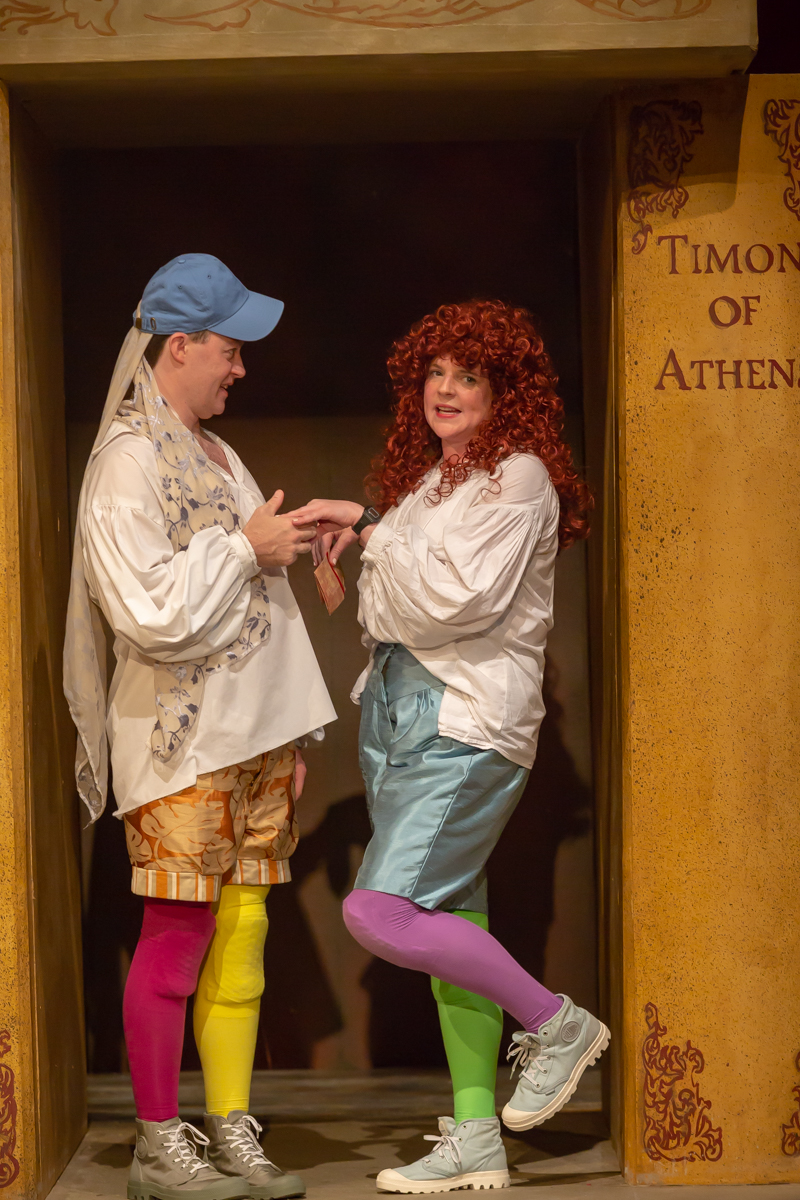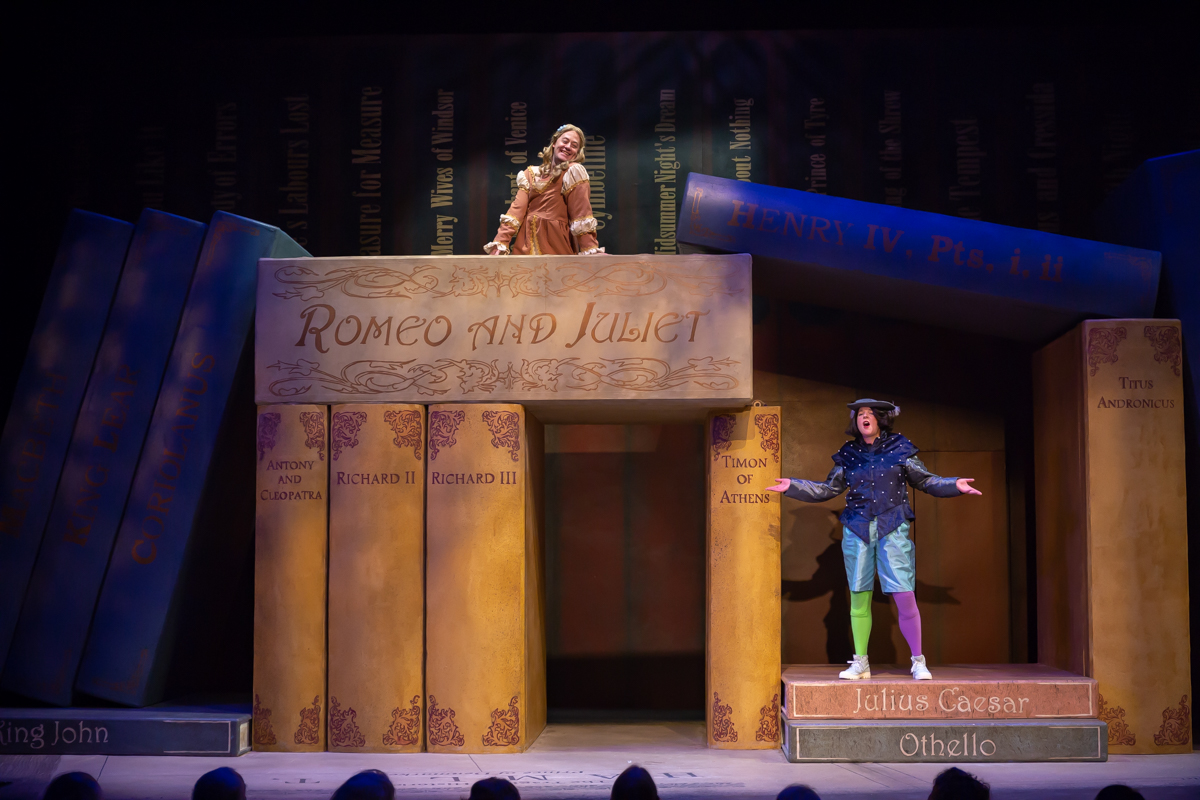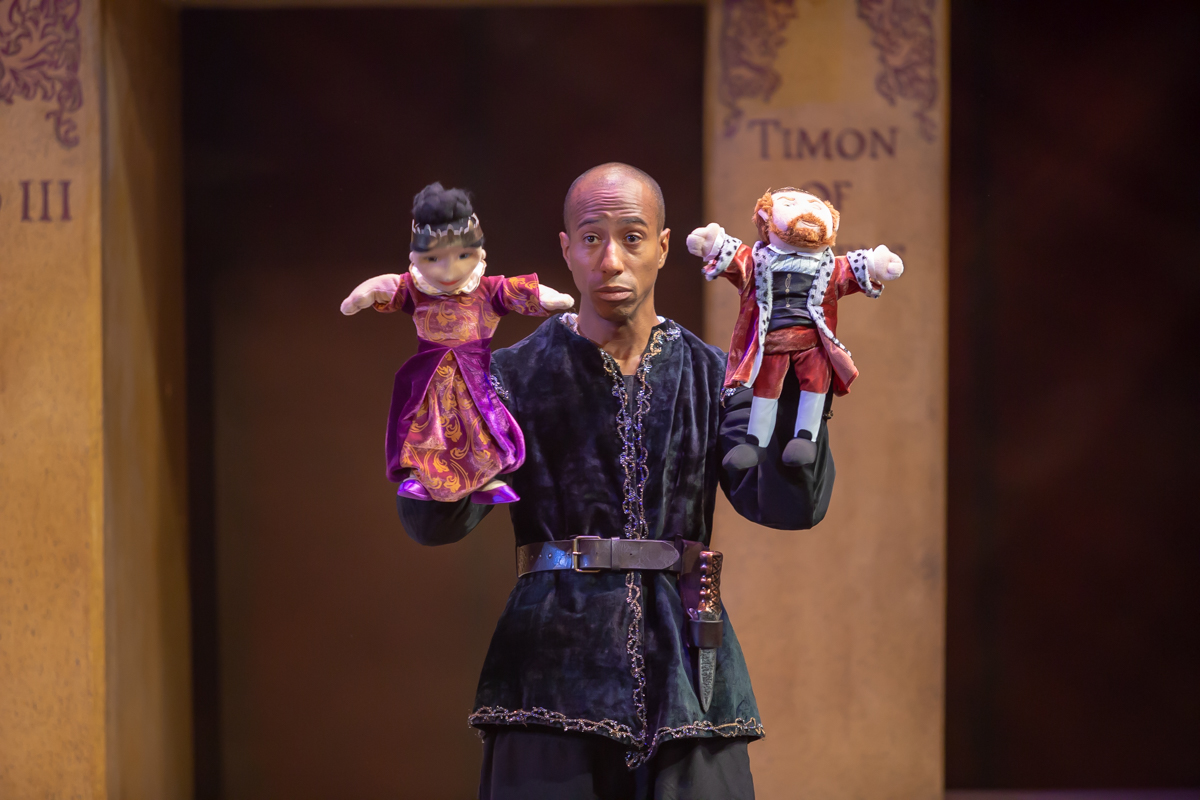“The Complete Works of William Shakespeare (abridged)” begins with “Australia’s Miranda McGee” laying out the plan — to present all 38 Shakespearean plays in an hour and a half, a task that has never been performed, or at least not since it was performed last month in Dayton. And, in fact, just about every year at Cincinnati Shakespeare Company. The show is a mainstay for the ascendant company, but their current production marks its first appearance on stage at their new Otto M. Budig Theater.
Expectations for this tried-and-true comedy are high, but the cast and crew are more than up to the task. These people are very, very funny. Miranda McGee’s character is, by turns, supremely confident (to greet the applause when she first walks on stage, she says, simply, “You’re welcome,”) and hilariously out of her depth. When she’s on stage alone for a just-this-side-of-uncomfortably-long scene after the others have chased each other out of the theater, her deer-in-headlights stare belies an adeptness at working the audience. Several of the most side-splittingly hilarious moments come from her stalling tactics, including what she refers to as a traditional Australian song that goes, “Beastiality’s great, mate!”

Geoffrey Warren Barnes III serves as the “pre-eminent” Shakespearean scholar of the cast — a distinction he earned from a website that he kind of skimmed. Justin McCombs, initially disguised as an audience member, is both the audience’s advocate and the prerequisite Shakespearean man in a dress. After immediately falling behind schedule by spending about 12 minutes on “Romeo and Juliet,” the trio blaze through the remaining 37 works of the Bard’s canon.

Photo credit: Mikki Schaffner Photography
Because the comedy’s use very similar devices, they are combined into a single work, involving a shipwreck, some magic, mistaken identities, cross-dressing and a stereotype of an Italian Jew. “Titus Andronicus,” notorious for its gratuitous violence, is treated as a cooking show where the recipe describes how to trick your enemy into eating her children. The history cycle is portrayed as a football game in which the crown is the pigskin. It’s astonishing to see how quickly the entire body of work of the greatest English-language writer of all time can be brought to the stage.
The entire second act is dedicated to “Hamlet.” Where most of the play is an exercise in carving out only the highlights of each work, “Hamlet” is treated with just a modicum of reverence. It’s all still completely absurd, of course, but it’s built around a few nuggets of deep analysis of the text. At one point, through audience participation, the cast creates a Freudian analysis of Ophelia’s state of mind, complete with representations of her unconscious, id, ego and superego.

Photo credit: Mikki Schaffner Photography
“The Complete Works” is a complete blast. Not a moment goes by that is not pure entertainment. No matter how familiar you are with Shakespeare’s works, there is something in this absurd piece of theater that will leave you laughing until it hurts. In short, it’s great, mate.
Zach Moning is the communications manager at ArtsWave. Reach him here with questions or comments about ArtsWave Guide.